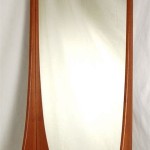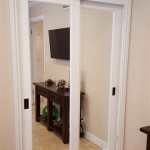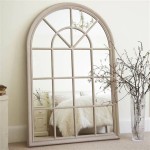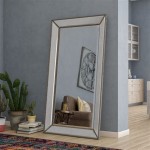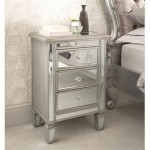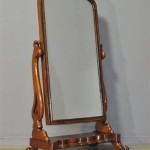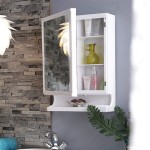How to Make a Long Vanity Mirror
A long vanity mirror can dramatically enhance the aesthetics and functionality of a bathroom, dressing room, or bedroom. Its elongated design provides a full-body reflection, making it ideal for getting ready. Constructing a long vanity mirror involves careful planning, precise measurements, and a methodical approach. This article details the process of building a custom long vanity mirror, covering material selection, construction techniques, and installation considerations.
Planning and Material Selection
The first step in creating a long vanity mirror involves defining the scope of the project. This includes determining the desired dimensions of the mirror, choosing the framing material, and selecting the appropriate mirror glass. Accurate measurements are crucial for a successful outcome.
Dimensions: The length and width of the mirror should be based on the available space and the intended use. Consider the wall space where the mirror will be mounted and the overall proportions of the room. A typical full-length mirror ranges from 60 to 72 inches in height, but adjustments can be made based on individual preference and room constraints. The width should be sufficient to provide a clear reflection of the user's entire body, typically between 24 and 36 inches.
Framing Material: The frame serves both a structural and aesthetic purpose. Common materials include wood (pine, oak, maple), metal (aluminum, steel), and composite materials (MDF, PVC). Wood frames offer a classic and customizable look, while metal frames provide a sleek, modern aesthetic. Composite materials are often more cost-effective and moisture-resistant, making them suitable for bathroom environments. The choice of material should complement the existing decor and withstand the humidity if it's located in bathroom.
Mirror Glass: Opt for high-quality mirror glass designed for vanity applications. Standard mirror glass is typically 1/4 inch thick, providing sufficient durability and reflectivity. Low-iron glass offers enhanced clarity and color accuracy, minimizing any green tint that can occur with standard glass. Ensure the mirror glass is cut to the exact dimensions specified during the planning phase. It is advisable to have the mirror cut by a professional glass shop to ensure clean, precise edges and minimize the risk of breakage. Safety is paramount. Request that the edges of the mirror be polished or seamed to reduce the risk of cuts during handling and installation.
Additional Materials: Beyond the frame and mirror, several other materials are required. These include:
- Wood glue or construction adhesive
- Screws or nails for frame assembly
- Mirror mounting clips or adhesive
- Sandpaper (various grits)
- Paint or stain (if applicable)
- Sealer (if applicable, especially for wood frames in a bathroom)
- Measuring tape
- Level
- Drill
- Saw (miter saw or circular saw)
- Safety glasses and gloves
Frame Construction and Assembly
Once the materials have been selected and gathered, the next step involves constructing the frame. This process requires precision and attention to detail to ensure a structurally sound and visually appealing result.
Cutting the Frame Pieces: Using a miter saw or circular saw, cut the frame pieces to the required lengths. The lengths should be calculated based on the exterior dimensions of the mirror glass and the desired width of the frame. For example, if the mirror is 60 inches long and the frame is 2 inches wide, the two long frame pieces should be 64 inches long each. The two short frame pieces should be equal to the width of the mirror glass plus twice the frame width, taking into account the mitered corners.
Assembling the Frame: Mitered corners provide a clean, professional look. To achieve accurate miters, set the saw to a 45-degree angle. Ensure that the cuts are precise and that the corners align perfectly. Apply wood glue or construction adhesive to the mitered edges and clamp the frame pieces together. Use screws or nails to reinforce the joints. Countersink the screws to prevent them from protruding from the surface of the frame. Allow the glue to dry completely before proceeding.
Sanding and Finishing: After the frame has been assembled, sand the surfaces to create a smooth, even finish. Start with a coarser grit sandpaper (e.g., 80 grit) and gradually move to finer grits (e.g., 120 grit, 220 grit) to remove any imperfections. Pay particular attention to the mitered corners, ensuring that they are flush and seamless. Once the frame has been sanded, apply paint or stain as desired. Multiple coats may be necessary to achieve the desired color and coverage. Allow each coat to dry completely before applying the next. If using a wood frame in a bathroom, apply a sealer to protect the wood from moisture.
Creating a Mirror Recess: The frame must provide a recess to accommodate the mirror glass. This can be achieved by routing a groove along the inside edge of the frame or by attaching small strips of wood to the back of the frame to create a ledge. The recess should be slightly larger than the thickness of the mirror glass to allow for easy installation. Ensure the recess is deep enough to hold the mirror securely, typically around 1/4 to 3/8 inch.
Mirror Installation and Mounting
The final step involves installing the mirror glass into the frame and mounting the completed mirror to the wall. This process requires careful handling of the mirror glass and secure attachment to the wall to prevent accidents.
Installing the Mirror Glass: Carefully place the mirror glass into the recess in the frame. Use mirror mounting clips or adhesive to secure the mirror in place. Mirror mounting clips are small metal brackets that attach to the back of the frame and hold the mirror in position. Mirror adhesive is a specialized adhesive designed for bonding mirrors to surfaces. Apply the adhesive sparingly to prevent it from seeping out around the edges of the mirror. Ensure the mirror is centered within the frame and that it is securely held in place.
Mounting the Mirror to the Wall: Determine the desired location for the mirror on the wall and mark the mounting points. Use a level to ensure that the mirror will be installed straight. Choose appropriate mounting hardware based on the weight of the mirror and the type of wall. For drywall, use drywall anchors that are rated to support the weight of the mirror. For stud walls, screw directly into the studs for maximum support. If the mirror is heavy, it may be necessary to use multiple mounting points to distribute the weight evenly.
Securing the Mirror: Carefully lift the mirror into position and align it with the marked mounting points. Attach the mirror to the wall using screws or other appropriate fasteners. Ensure that the fasteners are tightened securely but not over-tightened, as this can damage the frame or the wall. Double-check that the mirror is level and that it is securely mounted to the wall.
Final Touches: Once the mirror has been mounted, inspect it for any imperfections or gaps. If necessary, apply caulk or sealant around the edges of the frame to create a seamless transition between the mirror and the wall. Clean the mirror glass with a glass cleaner to remove any smudges or fingerprints.
By following these steps, it is possible to construct a custom long vanity mirror that enhances the aesthetics and functionality of any space. Careful planning, precise measurements, and attention to detail are essential for a successful outcome. The finished product will provide years of enjoyment and add value to the home.

How To Make A Large Bathroom Mirror Look Designer Mirrors Design Model

Diy Wood Framed Bathroom Mirror Christina Maria Blog

Diy Light Up Vanity Mirrors You Can Make Ohmeohmy Blog

How To Make A Large Bathroom Mirror Look Designer Home Bathrooms Remodeling

How To Make A Diy Bathroom Mirror Frame Thediyplan

Diy Bathroom Mirror Frame For Under 10 O Hayley Blog

Diy Bathroom Mirror Storage Case Shanty 2 Chic

Diy Bathroom Mirror Frame For Under 10 O Hayley Blog

Diy Make Up Mirror Vanity Makeup

Easy Diy Tutorial Adding Trim Around A Giant Mirror For Ers
